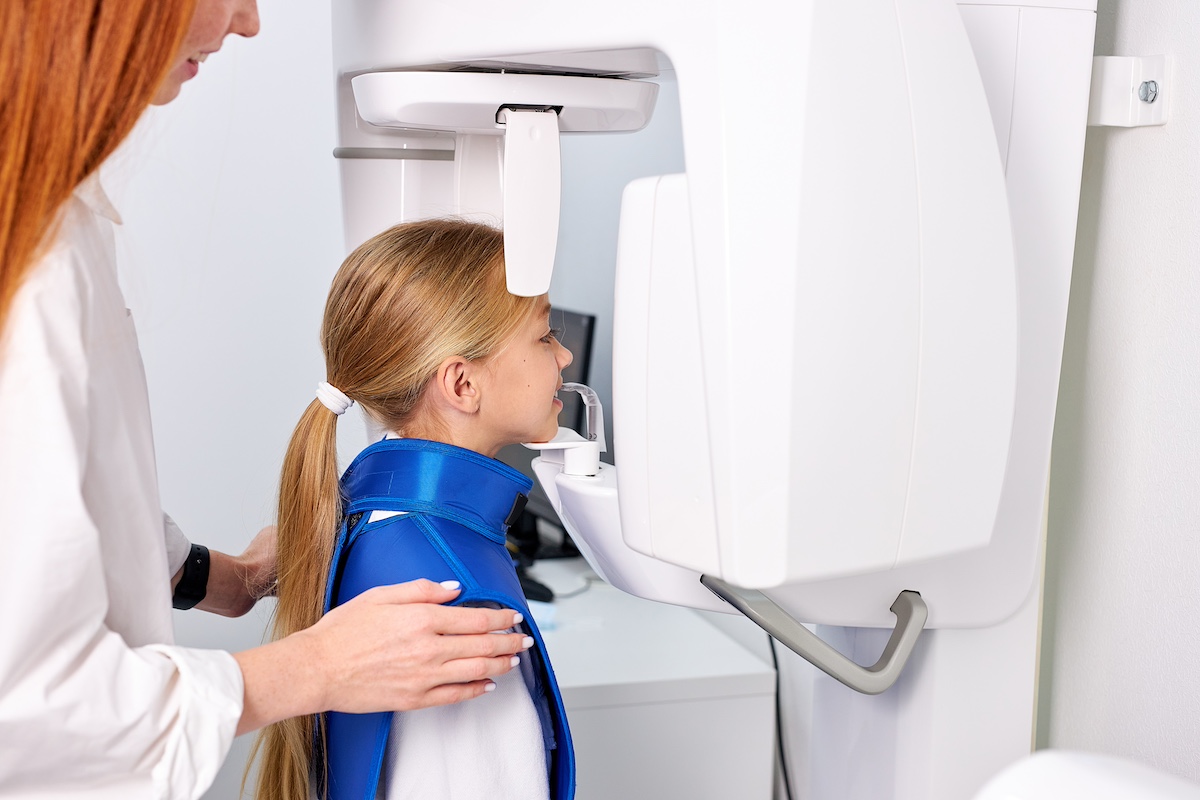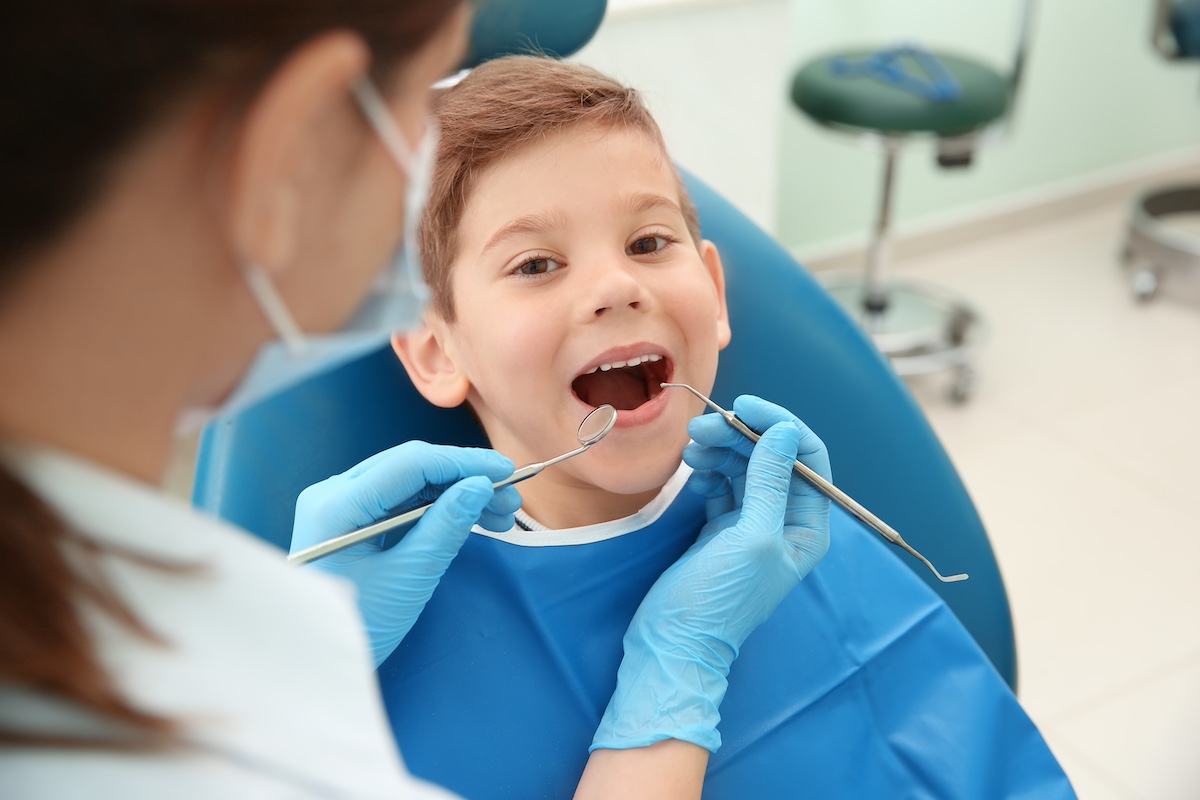In the realm of pediatric dentistry, the well-being of your child’s oral health is undoubtedly a top priority. Among the countless decisions you make as a parent, the topic of dental X-rays for children often stands as a pivotal one. Questions, concerns, and myths swirl around this subject, leading to uncertainty and concerns as to whether X-rays are safe for kids or not.
We’re here to dispel misconceptions and reveal the truth regarding this hotly debated subject. As dental professionals, we have the facts, and we’re thrilled to share them with you in this blog post. So, are dental X-rays safe for children? Keep reading to uncover the truth!
Understanding Dental X-Rays
When most folks think about X-rays, they think about radiation. And, unsurprisingly, the term “radiation” raises plenty of red flags and safety concerns.
But when it comes to dental X-rays, things aren’t exactly as they may seem.
These X-rays, or radiographs, are captured by exposing your child’s oral structures to a minuscule and controlled dose of radiation. The resulting images give dentists an invaluable view below the surface of the teeth and gums, allowing them to detect concealed issues that a routine examination might overlook. It’s a calculated dance between risk and reward, where the benefits reign supreme.
Dispelling Radiation Myths
The idea of exposing your child to even a small amount of radiation might seem frightening. But it’s important to distinguish fact from fiction when it comes to dental X-rays. The amount of radiation used in dental X-rays is minimal. In fact, dental X-rays typically expose kids to less radiation than the natural background radiation they’re exposed to daily.
We live in an era of technological marvels that have significantly reduced radiation exposure — a feat accomplished by digital X-rays requiring shorter exposure times while retaining diagnostic precision.
Safeguarding Your Child During Dental X-Rays

While very little radiation is used, dental professionals take several precautions to ensure patient safety during X-rays. Some of the measures taken to protect your child include:
- The Lead Ensemble: Your child will be outfitted with a lead apron and collar designed to shield their body and, crucially, their thyroid gland from radiation exposure during the X-ray procedure.
- Lightning-Fast Image Capture: The digital sensors used in modern digital dental radiography require minimal exposure time while delivering maximal diagnostic insight. This technological marvel translates to significantly reduced radiation exposure.
- Precise Positioning: Dental professionals ensure that the X-ray equipment is positioned precisely to avoid having to retake images. This guarantees minimal exposure and maximizes the accuracy of the captured images.
Why Dental X-Rays Are Important for Kids
Dental X-rays play a pivotal role in safeguarding children’s oral health. These diagnostic tools offer insights that reach deep below the surface, allowing dentists to detect potential issues invisible to the naked eye.
With the rapid changes occurring in a child’s mouth, X-rays become a crucial compass that aids dentists in tracking the growth and development of both primary and permanent teeth. Early detection of cavities, hidden decay, and emerging orthodontic problems enables professionals to intervene proactively, preventing more serious issues down the road.
Through dental X-rays, dentists craft personalized treatment plans, ensuring that every child receives tailored care that aligns with their unique dental needs. Ultimately, these X-rays provide a proactive approach to maintaining optimal oral health, setting the foundation for a lifetime of healthy smiles.
How Often Kids Need Dental X-Rays
The frequency at which children require dental X-rays hinges on several key factors.
Factors dentists consider when determining when kids need X-rays include:
- Age
- Oral health history
- Individual risk factors
Generally, children with a higher risk of dental issues might need X-rays more frequently. For example, a child with a history of cavities or orthodontic concerns may require X-rays on a regular basis. On the other hand, X-rays may be recommended less often for kids with excellent oral hygiene and no significant dental concerns.
As a general guideline, most children undergo dental X-rays once a year during their routine check-ups. This annual schedule allows dentists to monitor changes in dental development, identify emerging issues, and track the progression of any previous concerns. By adhering to this schedule, dentists can catch problems at their earliest stages, facilitating prompt and effective treatment.
It’s important to remember that the frequency of X-rays is carefully balanced to ensure that the benefits of early detection outweigh the minimal radiation exposure. Your child’s dentist will tailor the X-ray schedule to their specific needs, guaranteeing optimal oral health while minimizing radiation exposure.
Alternatives to Dental X-Rays

While dental X-rays offer valuable insights, there are alternative diagnostic tools dentists may use depending on the situation. Visual examinations remain a cornerstone of dentistry, allowing dentists to identify visible signs of decay, cavities, and gum disease. By inspecting the mouth, teeth, and gums, dentists can often diagnose common issues without the need for X-rays.
Additionally, discussions with patients and parents about symptoms and oral health history can provide essential information for diagnosis. Understanding any discomfort, pain, or changes in oral habits can aid in pinpointing potential problems. Technological advancements have also brought forth tools like intraoral cameras, which allow dentists to capture high-resolution images of specific areas within the mouth.
It’s worth noting that while alternatives have their place, dental X-rays remain unparalleled in their ability to reveal issues hidden below the surface. Their capacity to detect problems that might not be evident through visual examination alone makes them an essential part of comprehensive dental care, especially for monitoring growth, diagnosing cavities between teeth, and assessing orthodontic needs.
Conclusion
Your child’s oral health journey is an adventure, and your choices about dental care are a big part of it. Among all the decisions you make, getting dental X-rays is an important step in keeping your kid’s teeth and gums healthy. Dentists take special care to make sure X-rays are safe for kids, and they know a lot about how to do it right. While radiation exposure concerns many parents, the good things that come from X-rays — like finding problems early and stopping issues before they start — outweigh the minuscule risk.
If it’s been a while since your child’s last checkup, contact their dentist to schedule an appointment. Feel free to ask them any questions you may have regarding dental X-rays. They’ll happily provide the information you need to make an informed decision.

